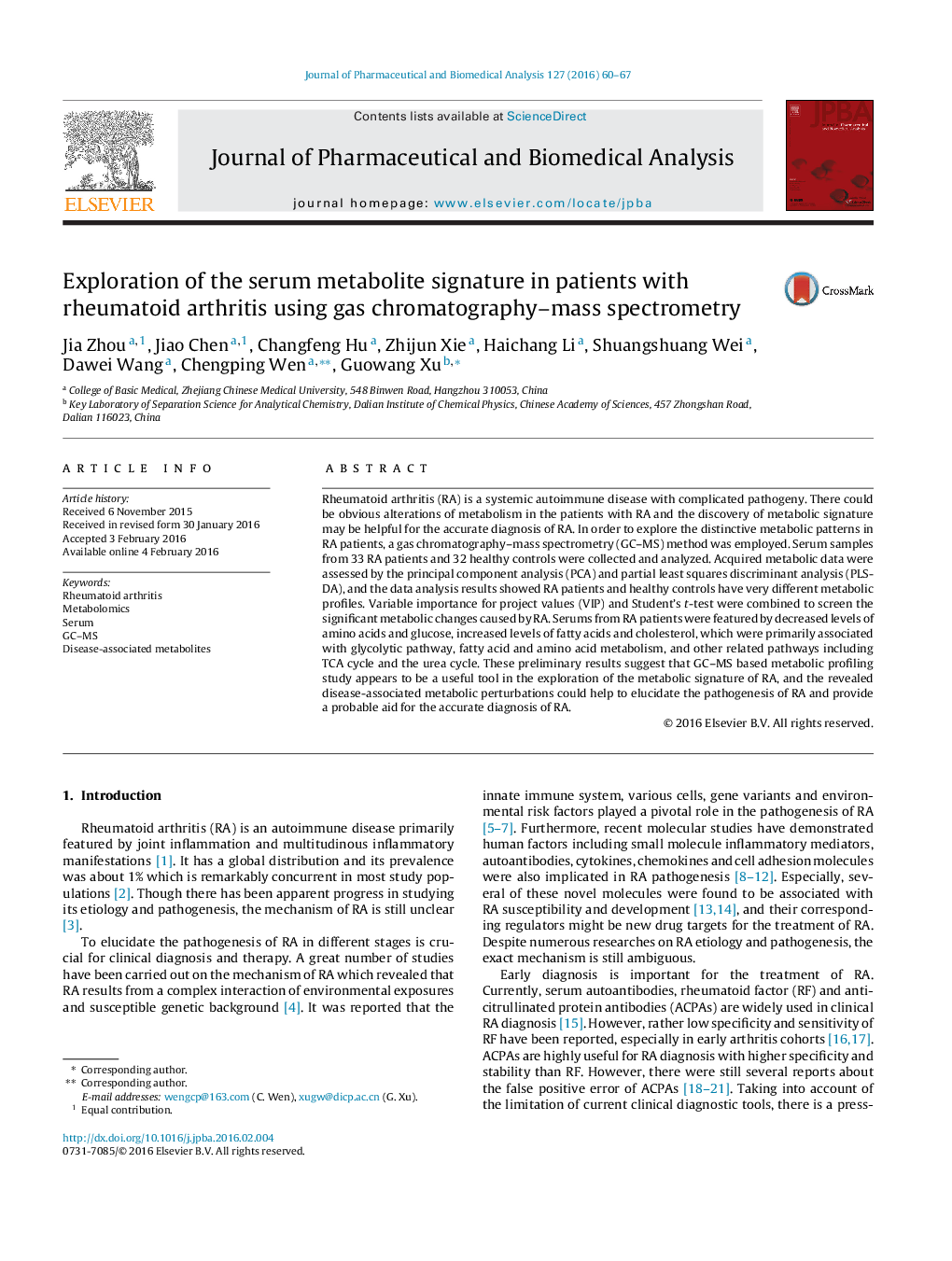| کد مقاله | کد نشریه | سال انتشار | مقاله انگلیسی | نسخه تمام متن |
|---|---|---|---|---|
| 1220914 | 1494608 | 2016 | 8 صفحه PDF | دانلود رایگان |
• A GC–MS based metabolic profiling method was employed to explore the metabolic signature of RA.
• Multivariate statistical analysis revealed that RA patients and healthy controls have very different metabolic profiles.
• Decreased levels of amino acids and glucose, and increased levels of fatty acids and cholesterol were detected in patients.
• Metabolic perturbations in glycolytic pathway, fatty acid, amino acid metabolism, etc. may be associated with RA.
Rheumatoid arthritis (RA) is a systemic autoimmune disease with complicated pathogeny. There could be obvious alterations of metabolism in the patients with RA and the discovery of metabolic signature may be helpful for the accurate diagnosis of RA. In order to explore the distinctive metabolic patterns in RA patients, a gas chromatography–mass spectrometry (GC–MS) method was employed. Serum samples from 33 RA patients and 32 healthy controls were collected and analyzed. Acquired metabolic data were assessed by the principal component analysis (PCA) and partial least squares discriminant analysis (PLS-DA), and the data analysis results showed RA patients and healthy controls have very different metabolic profiles. Variable importance for project values (VIP) and Student’s t-test were combined to screen the significant metabolic changes caused by RA. Serums from RA patients were featured by decreased levels of amino acids and glucose, increased levels of fatty acids and cholesterol, which were primarily associated with glycolytic pathway, fatty acid and amino acid metabolism, and other related pathways including TCA cycle and the urea cycle. These preliminary results suggest that GC–MS based metabolic profiling study appears to be a useful tool in the exploration of the metabolic signature of RA, and the revealed disease-associated metabolic perturbations could help to elucidate the pathogenesis of RA and provide a probable aid for the accurate diagnosis of RA.
Figure optionsDownload as PowerPoint slide
Journal: Journal of Pharmaceutical and Biomedical Analysis - Volume 127, 5 August 2016, Pages 60–67
